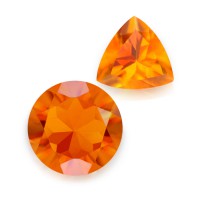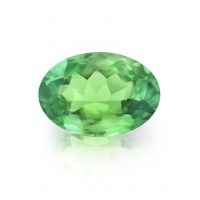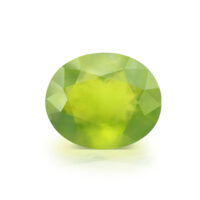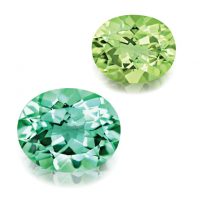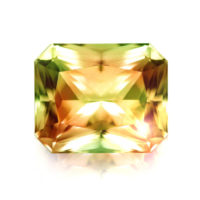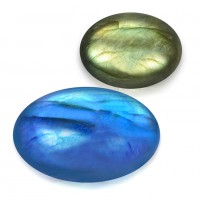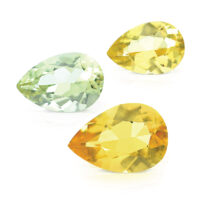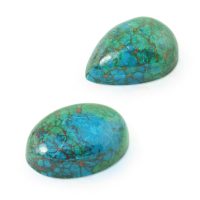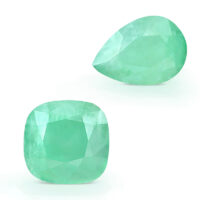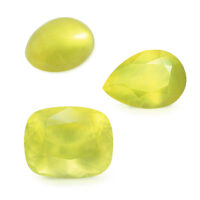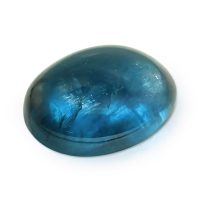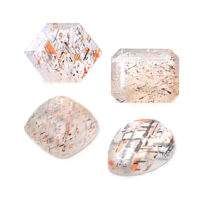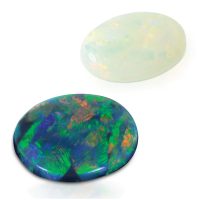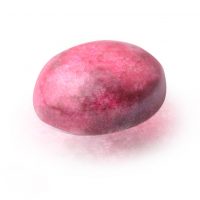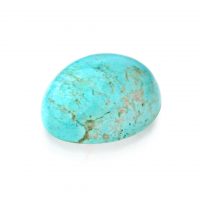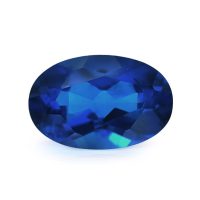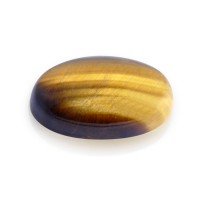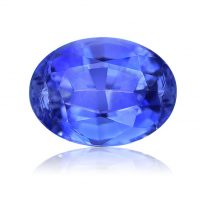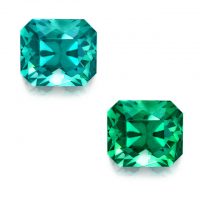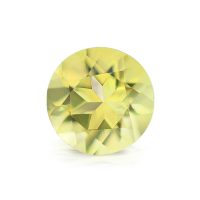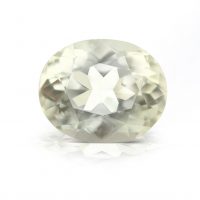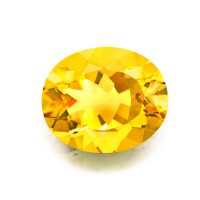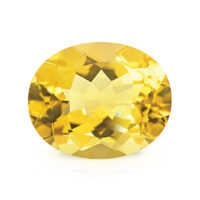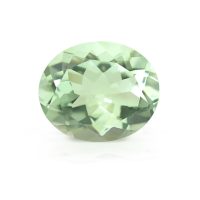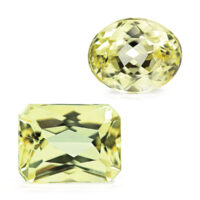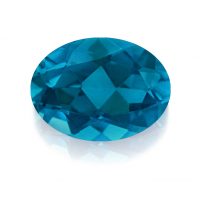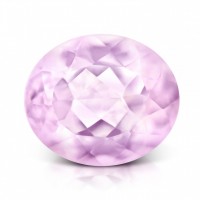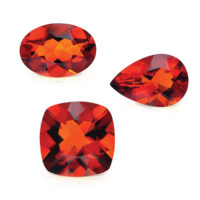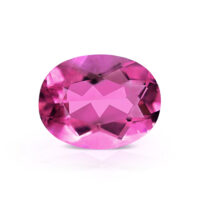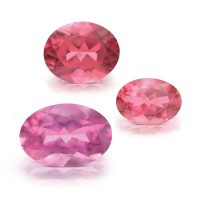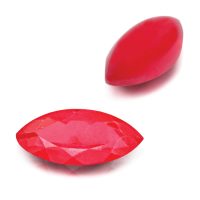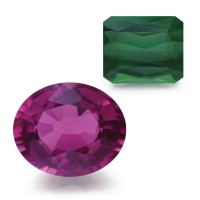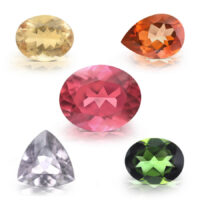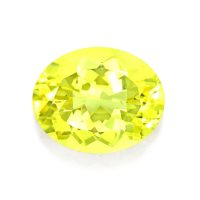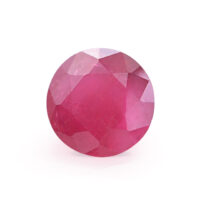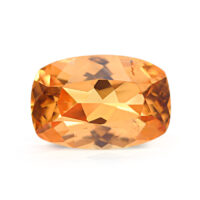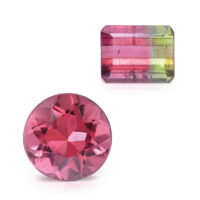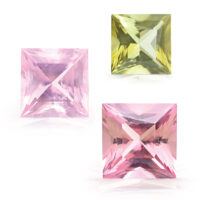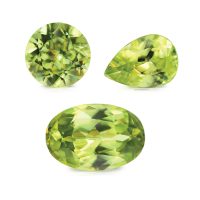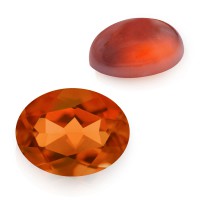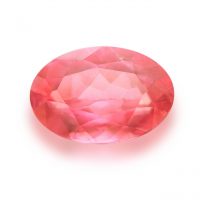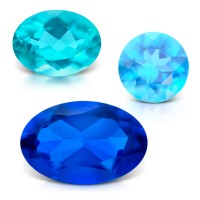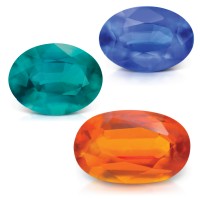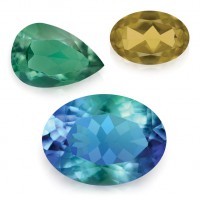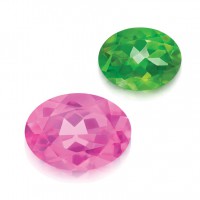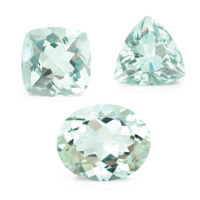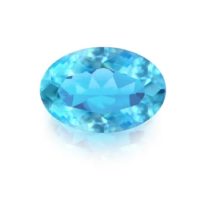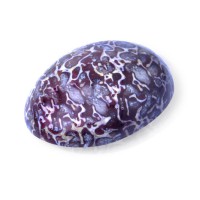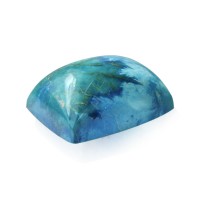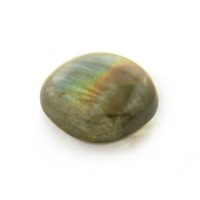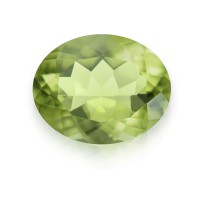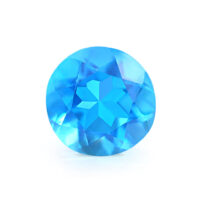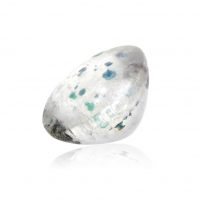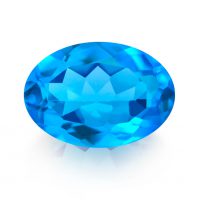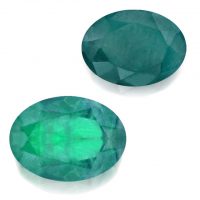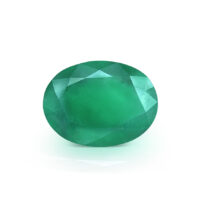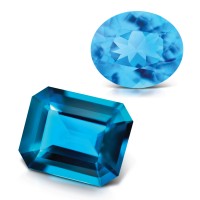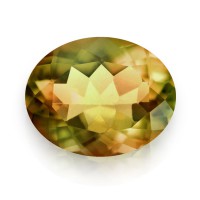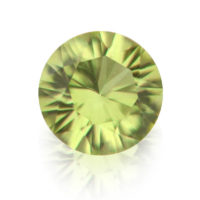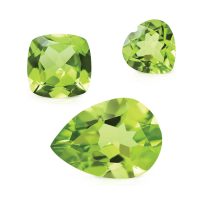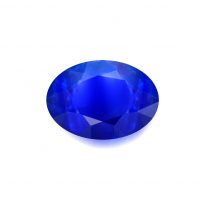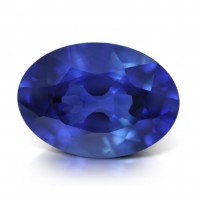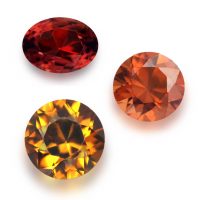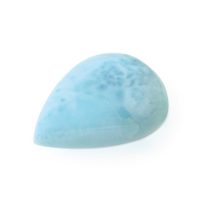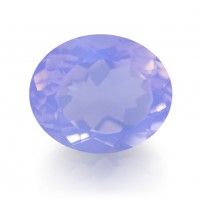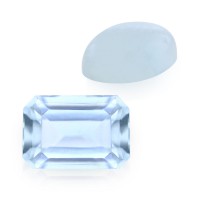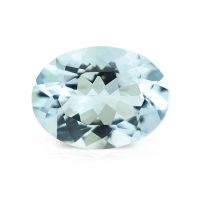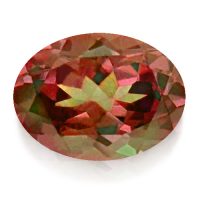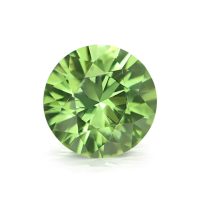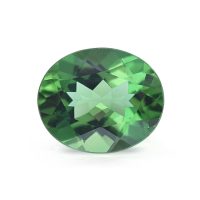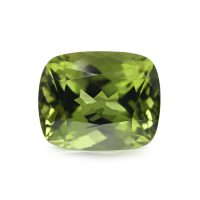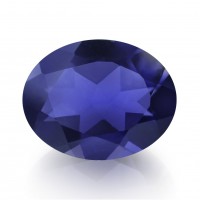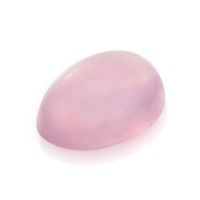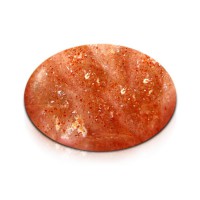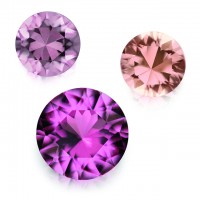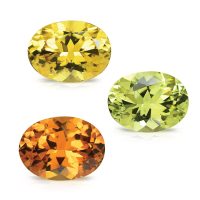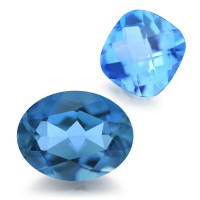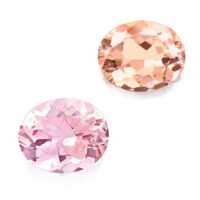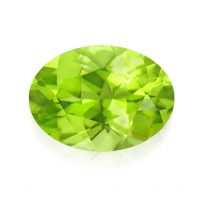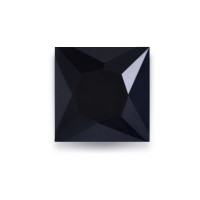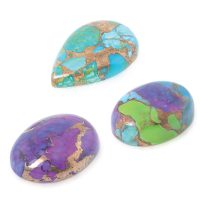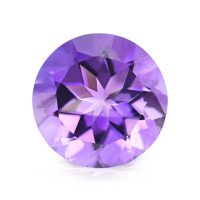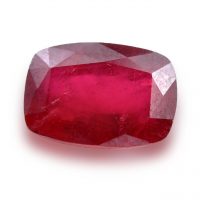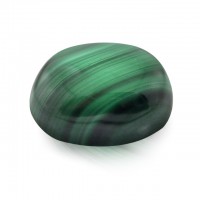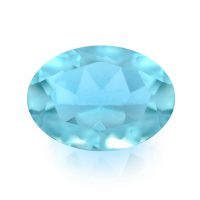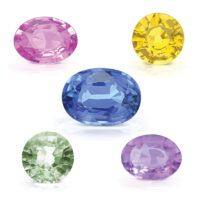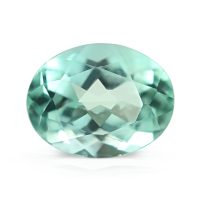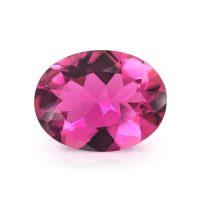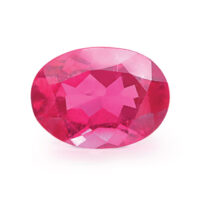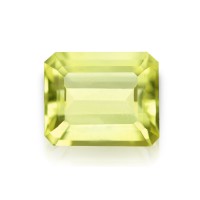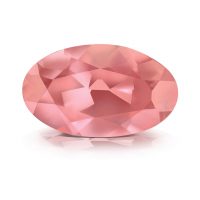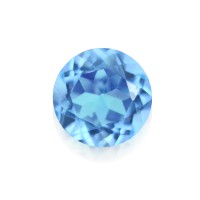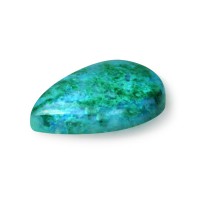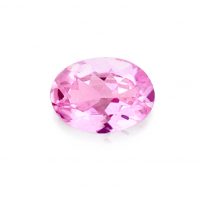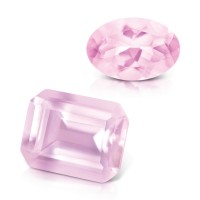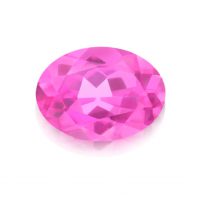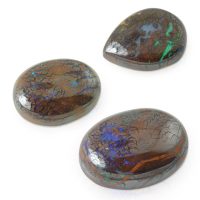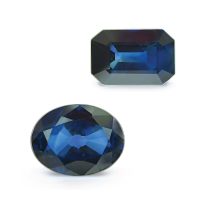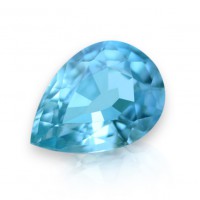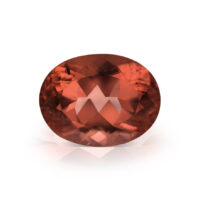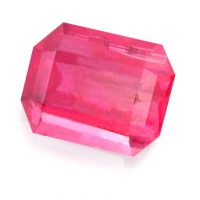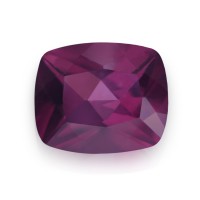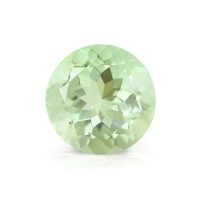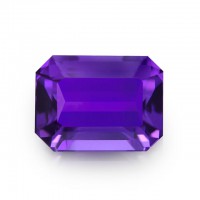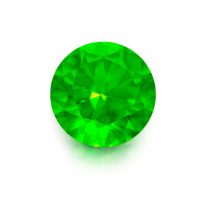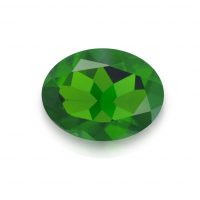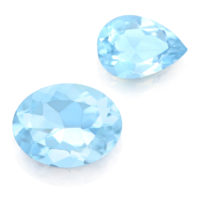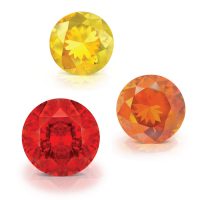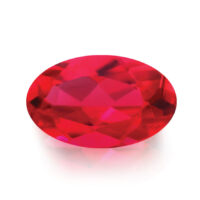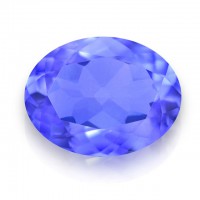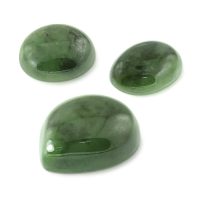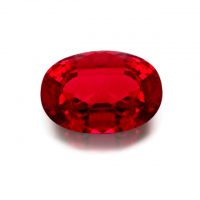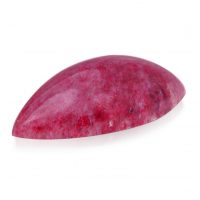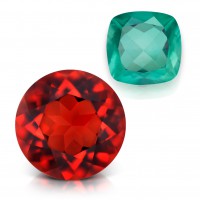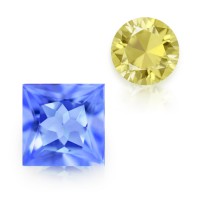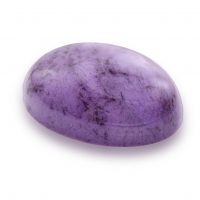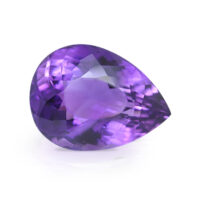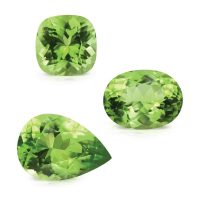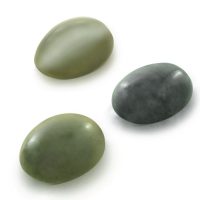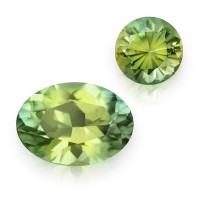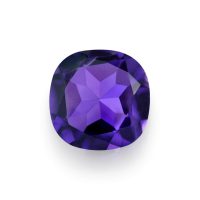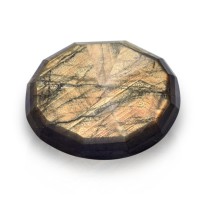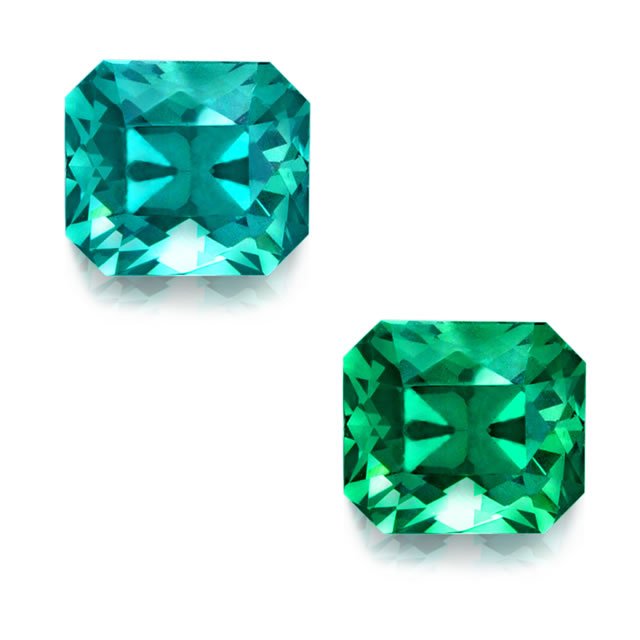

Blue Garnet are uniquely beautiful teal (blue-green) gemstones recently unearthed in Tanzania’s famous Umba River Valley. Only reported in 2017, Blue Garnet is a rare and unusual sub-variety of an already rare Garnet, Color Change Umbalite, and despite its beauty, will always have an inadequate supply, making Blue Garnet highly collectable and very exclusive.
Hardness 7 - 7.5
Refractive Index 1.760 - 1.765
Relative Density 3.83 - 3.88
Enhancement None
Beauty
Named for a dominant hue rarely seen in Garnets, Blue Garnet is an incredibly scarce, undeniably beautiful, and an extremely unusual variety of Color Change Umbalite Garnet. Unlike traditional Color Change Garnets that exhibit a color change from purplish or orangish red in incandescent (indoor) light, to bluish or yellowish green in daylight, Blue Garnet displays an attractive color change from blue with a hint of green (greenish blue) in sunlight or candescent light, to green with blue flashes (bluish green) in candlelight or incandescent light. While subtle flashes of other colors (e.g. pastel pinkish purple) may occasionally occur, ‘blue’ will be the main color in most lighting conditions.
Blue Garnet is vaguely similar to Queensland Teal Sapphire, but its unique color change makes its ‘blues’ beautifully distinct when compared to other blue gemstones such as, Apatite, Indicolite, Kyanite, Paraíba Tourmaline, Topaz, Turquoise, and Zircon.
Optimal lapidary accentuates the innate beauty of Blue Garnet and every gem is finished eye-clean, the highest quality clarity grade for colored gemstones, with an attractive shape and overall appearance. Blue Garnet has excellent brilliance, and are mostly faceted as Ovals and Rounds, but any cut that maximizes brilliance is indicative of fine quality.
Used in adornment for over 5,000 years, Garnets were popular in ancient Egypt from around 3100 BC, being used as beads in necklaces as well as inlaid jewelry (gems set into a surface in a decorative pattern). Garnet’s many myths frequently portray it as a symbol of chivalry, faith, honesty, light, loyalty, and truth.
In Judaism, a Garnet is said to have illuminated Noah’s Ark and Garnet (carbuncle) was also one of the gems in the ‘breastplate of judgment’ (Exodus 28:15-30), the impetus for birthstones in Western culture. Crusaders considered Garnet so symbolic of Christ’s sacrifice that they set them into their armor for protection. In Islam, Garnets illuminate the fourth heaven, while for Norsemen, they guide the way to Valhalla. A Grimm’s fairy-tale even tells of an old lady, who upon rescuing an injured bird was rewarded for her kindness with a Garnet that glowed, illuminating the night.
A rare, natural cocktail primarily of Pyrope with traces of Spessartite, Umbalite was first unearthed in 1978 and named for the location of its discovery. A variety of Garnet, Umbalite is also referred to as Malaia (Malaya), which means ‘outcast’ or ‘out of the family’ in Swahili (a language of Tanzania and Kenya), as they do not match the color and gemological properties of other better-known Garnets. Interestingly, Blue Garnet is composed of equal amounts of Pyrope and Spessartite. Vanadium (compared to chromium that causes color change in Alexandrite) and manganese are the main cause of color change in Umbalite, noting Blue Garnet contains a much higher vanadium component than typically encountered in Umbalite. January’s birthstone, Garnet’s name is derived from the Latin ‘granatus’ (from ‘granum’, which means ‘seed’) due to some Garnets’ resemblance to pomegranate seeds. Coming in blues, chocolates, greens, oranges, pinks, purples, reds and yellows, Garnets are a group of minerals possessing similar crystal structures, but varying in composition, giving each type different colors and properties.
Rarity
On the Great North Road, between the plains of the Serengeti and the foothills of Mount Kilimanjaro lies the trading town of Arusha, the gateway to the famous gemstones of northeastern Tanzania. The source of some of the world’s finest gemstones, this area is part of East Africa’s Great Rift Valley, one of the greatest gem deposits on Earth. The Umba River originates in the Usambara Mountains, flowing eastward to the coast. Discovered in 1960, a gem deposit situated where the river nears the western edge of the Gilevi Hills in Tanzania’s Tanga Region is one of the world’s ‘classic’ gemstone locales. A deposit rich in colored gemstones, the Umba River (Umba Valley) is famous for its cornucopia of Fancy Sapphires (108 distinct colors) and Umbalite. With only a few artisanal miners still working the area since 2015, the Umba River is now ostensibly depleted.
‘Blue Garnet’ from the Umba River was first reported as ‘Blue-Green Pyrope-Spessartite Garnet with High Vanadium’ in the GIA’s (Gemological Institute of America), Gems & Gemology, Fall 2017, Vol. 53, No. 3. Color Change Garnets’ notable deposits are Tanzania’s Umba Valley (1987), Bekily in southern Madagascar (late 90s) and most recently (January 2009), near the village of Kamtonga in Kenya’s Taita Taveta District.
A rare and unusual sub-variety of an already rare Garnet, despite its beauty, Blue Garnet will always be very limited, and not only dependent on the luck of miners scouring sporadic, small and ever depleting pockets of Color Change Umbalite Garnet, but also deft grading and selection post lapidary to ensure color consistency and quality. Due to their rarity and small sizes, calibrated Blue Garnet for jewelry is extremely challenging to execute. Blue Garnet is also totally natural, which further increases its rarity.
Durability & Care
Blue Garnet (Mohs’ Hardness: 7 – 7.5) is an excellent choice for everyday jewelry. Blue Garnet should always be stored carefully to avoid scuffs and scratches. Clean with gentle soap and lukewarm water, scrubbing behind the gem with a very soft toothbrush as necessary. After cleaning, pat dry with a soft towel or chamois cloth.
Map Location
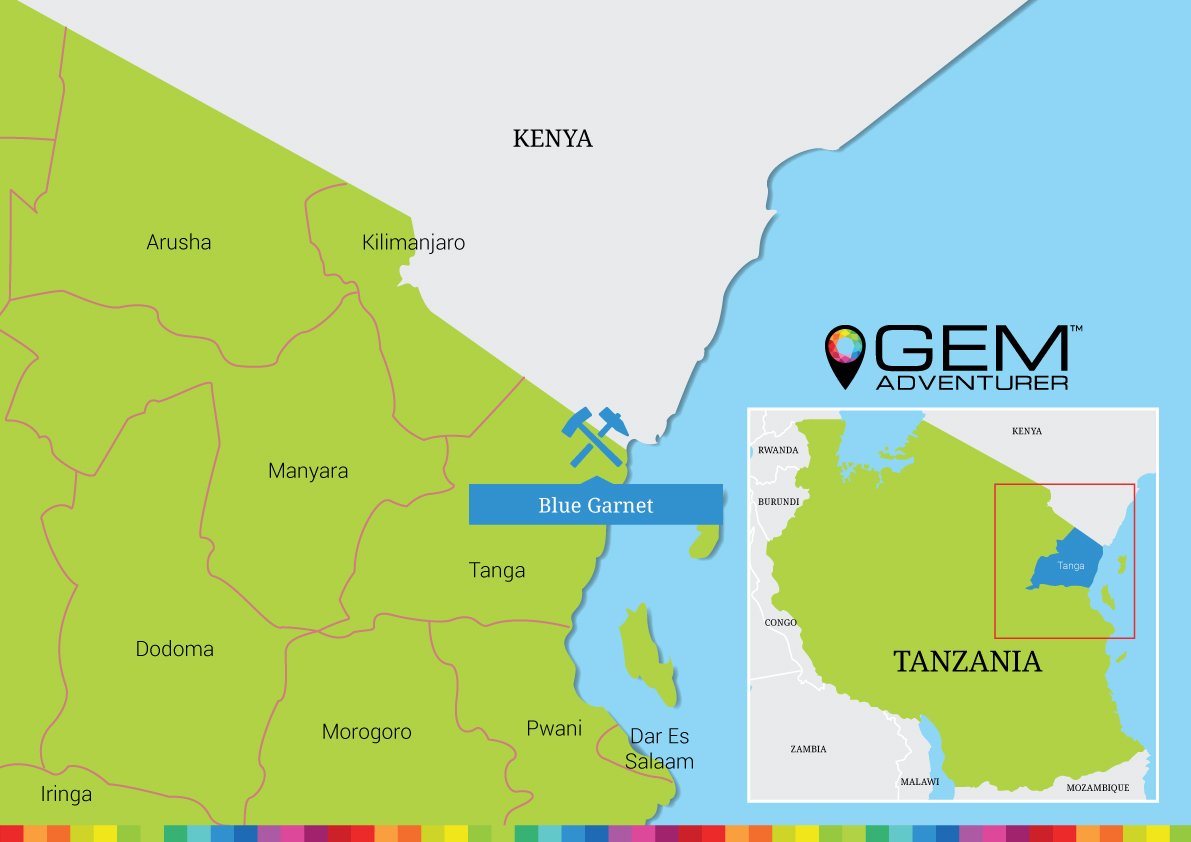
Click map to enlarge
